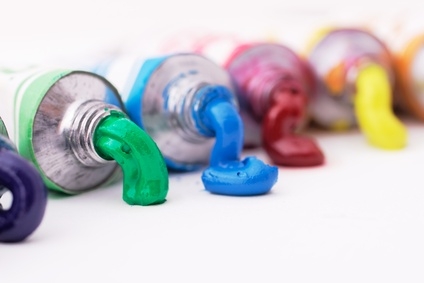Not every painting is destined to be a masterpiece, but some paintings are doomed to failure right from the start because of one relatively simple mistake. Here’s a list of five easy ways to ruin a painting…
1. Fried Egg Composition
It can be done successfully, but only rarely. When it’s done badly, it’s from the Fried Egg School of Composition (also known as the Bull’s Eye School). Putting the subject or focal point of a painting right in the center of the painting, vertically and horizontally, is dull, boring, hideous, horrible. A viewer’s eye goes straight into the center of the painting, takes in what’s there (but not what’s around it, towards the edges), and moves on to the next painting.
2. Lack of Tonal Difference
Color can be very seductive, pulling you in as you paint. A slash of yellow here, a dab of orange there. It’s all looking very colorful, yet something isn’t quite right. That’s when you need to check the range of tones in your painting. Just how much tonal difference is there between all the areas of color? If the painting were in gray tones only, would you quickly see that the tones are all very much the same. (It’s relatively quick and easy to do with this a photo of your painting by converting it into a gray scale image in a photo editing program.)
3. Too Many Colors
You’ve got all the colors of the rainbow at your disposal, so just go for it… The more the merrier, right? Actually, no. Using a vast range of colors in a painting is not a recipe for success. You’re not making fruit cake, it’s more like a delicate sponge cake where, with a few ingredients, wonders can be created. You’ll be (pleasantly) surprised by how much tonal variation can be created by a few colors, and how many colors you can mix with them. And how a limited palette gives an overall unity to a painting.
4. Only One Reference Photo, Copied Slavishly
Reference photos have their place, and a very useful spot it is too. Ever since photography was invented painters have used photos as an aid to their painting. But the emphasis must be on “reference”, as in “refer to”, not as in “copy every detail”. Don’t slavishly copy only one photo, use it as a starting point. Ideally use a whole bunch of reference photos. At some stage, put the photos aside and let the painting take on a life of its own. Remember, they’rereference photos.
5. Not Knowing When to Stop
Painting classes tend to focus on how to paint, rarely do they teach when to stop painting, how to judge when you’ve done enough and ought to step away from your easel. Overworking has destroyed many a successful painting. The moment you find yourself mostly satisfied with a painting and think you’ll “just quickly” do this or that, that’s the moment to stop completely. Take the painting off your easel and put it aside for at least 24 hours, then reassess whether it really needs that tweak.

Leave a Reply
You must be logged in to post a comment.